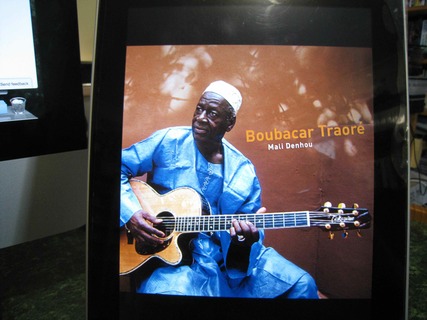Saturday , 21 April 2012

Reading about Boubacar Traoré I couldn’t help thinking there were parallels with the lives of some of the old Delta blues men. Not the likes of Howlin’ Wolf and Muddy Waters, the guys who packed up and headed to Chicago, hitting the relative big time plying clubs on the South Side before gaining national exposure when the Rolling Stones and their cousin brothers exposed the blues to a wider audience, I’m thinking here of the likes of Son House, Mississippi John Hurt, Skip James, Bukka White and Robert Pete Williams.
Son House recorded for Paramount in 1930 during a session for Charlie Patton, drifted into obscurity through the thirties, re-emerged to be recorded for the Library of Congress by John and Alan Lomax in 1941 and '42, then moved to Rochester, New York, where worked as a railroad porter and chef until Dick Waterman tracked him down in 1964.
Mississippi John Hurt was a sharecropper, playing local dances and parties before cutting sides for Okeh in 1928. They weren't hits, so Mississippi John continued to work as a farmer until a Washington blues enthusiast tracked him down in 1963 and persuaded him to move to Washington and record for the Library of Congress. He played the 1964 Newport Folk Festival, hit the coffee houses and concert halls of the early sixties folk revival cut three albums for Vanguard Records.
Nehemiah "Skip" James sharecropped, helped build roads and levees and sold bootleg whiskey around Bentonia, Mississippi, recorded for Paramount Records in 1931, drifted into obscurity and was rediscovered by John Fahey, Bill Barth (The Insect Trust, co-founder of the Memphis Country Blues Society) and Henry Vestine (Canned Heat) in a hospital in Tunica, Mississippi in 1964. The usual round of folk and blues festivals, concerts and recording followed and Cream's recording of his I'm So Glad provided the only windfall of his career.
Booker T. Washington Bukka White, second cousin of B.B. King, had a similar story before being rediscovered working in a tank factory in Memphis, thanks to a letter addressed to Bukka White (Old Blues Singer), c/o General Delivery, Aberdeen, Mississippi that was forwarded to his new address. John Fahey and ED Denson wrote the letter, and Bob Dylan had covered Fixin' to Die Blues in 1963, a number he'd come up with on the spot when his other material had failed to impress at a record session some thirty years earlier.
Robert Pete Williams, whose Grown So Ugly turned up on the first Captain Beefheart album (Safe as Milk, 1967), played music and worked in the lumberyards around Baton Rouge before a life sentence for a killing in a local club in 1956 led to his discovery in the Louisiana State Penitentiary by a pair of ethnomusicologists.